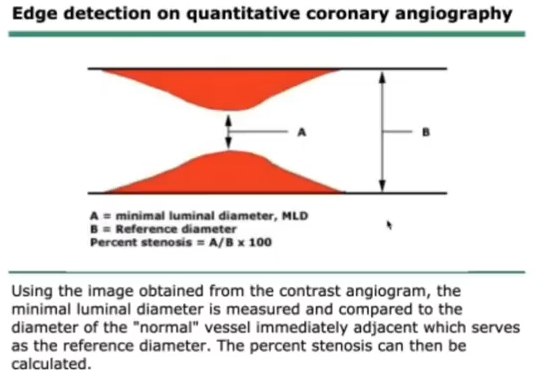A_User
#83
It’s not one paper and I think that’s how it works.
No, since you are not using what is considered clinically significant reduction in the literature. Either way, in that case you would have to accept that a progression of disease is clinically significant reversal of ASCAD because it also can coincide with a reduction of outcomes. It makes no sense. It is not reversal of plaque and thus atherosclerotic coronary artery disease (ASCAD).
If you see my responses to @Neo you will see why you need an increase in minimum diameter as well and why it is included in the definition.
I’d recommend reading the review paper I posted. The cut-off point for “clinically significant” is subjective/unknown when applied to diameter stenosis and MLD based on the current state of the literature. Smaller changes can be clinically (i.e. real-world) significant, as suggested by outcomes in the Ornish study.
A_User
#85
It’s not unknown and all definitions are subjective, unless you want me to argue for definitions being objective, and the Ornish study used Quantitative Coronary Angiography, so you need a definition for clinically relevant regression (or regression at all) pertaining to that.
Or rather an intervention can improve outcomes without regression of plaque, clinically relevant or not… There was no regression as a result of the intervention.
Read again why minimum lumen diameter has to increase.

If you accept that reversal is a decrease in percent stenosis without an increase in MLD (which can happen because the reference diameter increases, like vasodilation), then you’d have to accept that pomegranate juice reverses disease, which Ornish has studied, or nitrates, and a bunch of other interventions with similar results.
“…progression and regression should be related to an increase or decrease in risk of rupture as opposed to an increase or decrease in percent luminal stenosis (which has no direct relationship to events). For example, an increase in necrotic core volume with positive remodeling and fibrous cap thinning, regardless of change in luminal stenosis, could be considered plaque progression. Similarly, a decrease in necrotic core volume with a resultant increase in the fibrous cap thickness and calcification of the cap, even in the presence of a mild increase in luminal stenosis caused by negative remodeling, could be considered plaque regression”
https://www.jacc.org/doi/10.1016/j.jacc.2019.08.012
The Ornish study didn’t have access to new imaging modalities of plaque quality/quantity, but it stands to reason that the plaques regressed since LDL was decreased by 40% and the outcomes were so much better, even compared to those in the control group who went on statins. Regression/remodeling of plaques can be interpreted as “reversal”, although “cure” is admittedly an exaggeration (unless symptoms and clinical events were completely prevented/reversed, then “clinical cure” would be more appropriate).
A_User
#87
No it does not stand to reason because outcomes can improve without a clinically relevant regression in plaque.
Do you agree that the Ornish study cannot be said to be evidence that the intervention regresses plaque and ASCAD? Or do you believe that an improvement in outcomes is reversal of plaque?